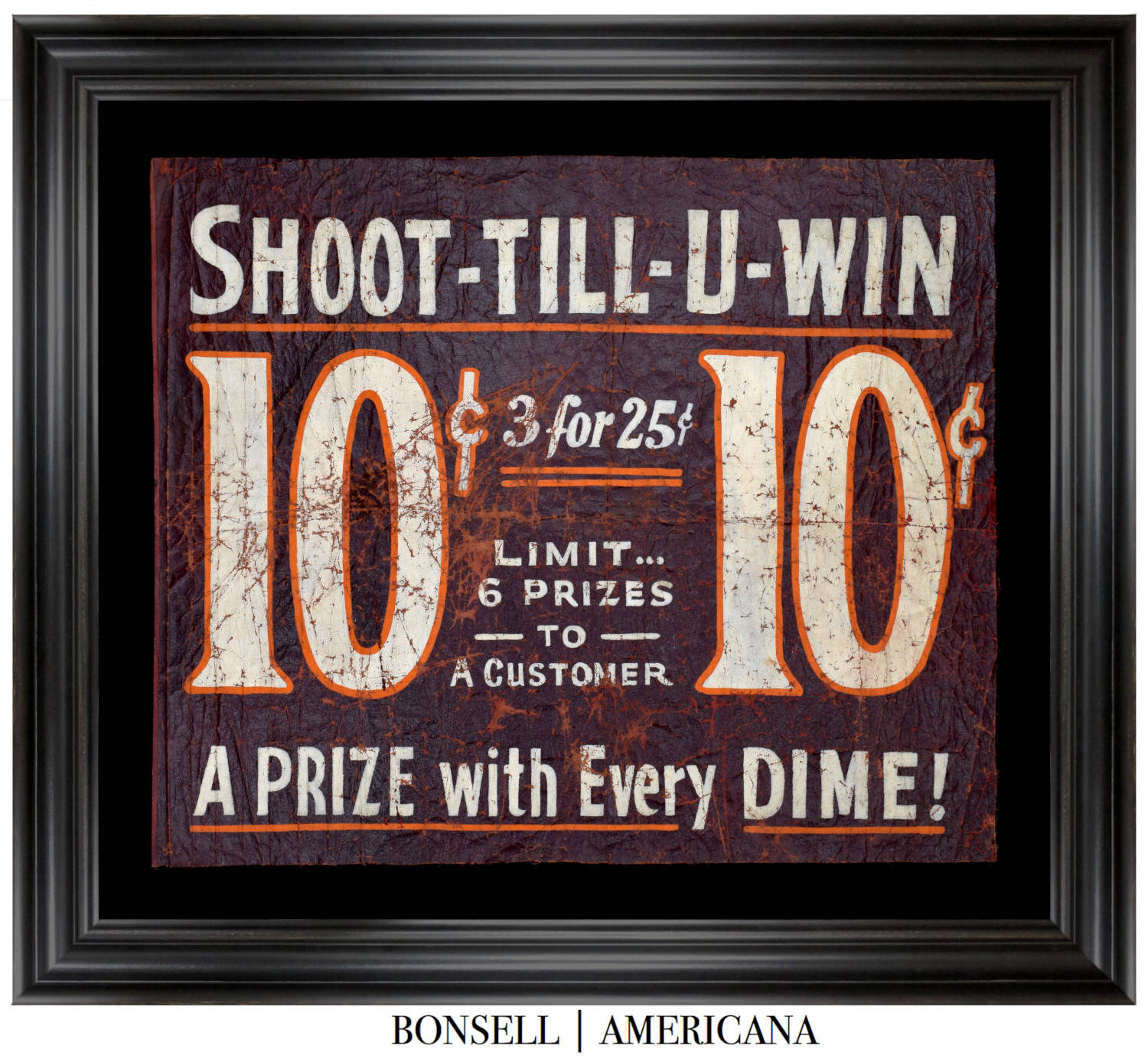Antique Blue Ribbon from the 10th Annual Chicago Feeder Cattle Show & Sale | Held at the Union Stock Yards in Chicago | Circa 1954
Antique Blue Ribbon from the 10th Annual Chicago Feeder Cattle Show & Sale | Held at the Union Stock Yards in Chicago | Circa 1954
Frame Size (H x L): 12.5” x 8”
Pennant Size (H x L): 7” x 2.5”
Offered is an antique ribbon, made for the 10th Annual Feeder Cattle Show & Sale, held in Chicago, in 1954. It is blue with the following overprint in gold:
10TH ANNUAL
CHICAGO
Feeder Cattle
Show & Sale
OCTOBER 28-29, 1954
TO BE HELD IN THE
UNION STOCK YARDS
CHICAGO
FIRST
AWARD
CARLOAD 20 HEAD
OPEN HEIFERS
1 YR. OLD & UNDER 2
ABERDEEN ANGUS
UNION STOCK YARDS
The Union Stock Yards was a sprawling meatpacking district located in Chicago, Illinois, that operated from the late 19th century to the mid-20th century. Founded in 1865 by businessman Philip Danforth Armour and other meatpacking magnates, the Stock Yards quickly became the largest and most technologically advanced livestock processing center in the world.
The Stock Yards covered more than 400 acres and employed tens of thousands of workers, many of them immigrants who came to Chicago seeking work in the rapidly expanding meatpacking industry. At its peak, the Stock Yards processed millions of cattle, hogs, and sheep each year, and its products were shipped all over the world.
The Stock Yards also played a significant role in shaping the culture and politics of Chicago. It was a hub of labor organizing and political activism, as workers fought for better wages and working conditions. It was also a site of cultural exchange, as different ethnic communities brought their own traditions and cuisines to the area.
However, the Stock Yards' decline began in the mid-20th century, as changes in the meatpacking industry and urban development led to its eventual closure in 1971. Today, much of the Stock Yards area has been redeveloped, but its legacy as a key player in the history of Chicago and the American meatpacking industry continues to be felt.
CARLOAD
A carload of cattle refers to a specific quantity of cattle that can be transported in a single railcar designed for carrying livestock. The exact number of cattle that make up a carload can vary depending on the size and weight of the animals, as well as the size of the railcar.
A carload of cattle is often used as a standard unit of measurement in the livestock industry, particularly in the context of buying and selling cattle. For example, a buyer may purchase a carload of cattle from a seller, which would typically include a predetermined number of animals based on the capacity of the railcar. This allows for more efficient and cost-effective transportation of livestock over long distances, particularly in areas where trucking cattle may not be feasible or cost-effective.
ABERDEEN ANGUS
Aberdeen Angus, also known as Angus cattle, is a breed of beef cattle that originated in Scotland in the early 19th century. They are known for their distinctive black coloration, polled (hornless) heads, and ability to produce high-quality beef.
The breed was developed by crossing various local Scottish cattle breeds, including the Angus Doddies and the Old Scottish Aberdeen Angus, which were known for their meat quality and hardiness. Over time, the breed was refined through selective breeding to produce a consistently high-quality meat product.
Today, Aberdeen Angus cattle are one of the most popular beef breeds in the world, with populations in countries such as the United States, Canada, and Argentina. They are particularly prized for their marbled meat, which is tender and flavorful, and their ability to thrive on low-quality forage.
Aberdeen Angus cattle are also popular for their docile temperament, ease of handling, and adaptability to a wide range of environmental conditions. They are a medium to large-sized breed, with cows typically weighing between 1,000 and 1,500 pounds and bulls weighing between 1,800 and 2,500 pounds.
In addition to their use in the beef industry, Aberdeen Angus cattle are also used in crossbreeding programs to improve the meat quality and hardiness of other cattle breeds. Overall, Aberdeen Angus is a versatile and popular breed of beef cattle known for their high-quality meat and ease of management.
Conservation Process: This ribbon was hand sewn to cotton fabric, and both were hand sewn to a mounting board. To prevent the black dye in the cotton fabric from seeping into the ribbon, it was first washed in a standard wash and then in a dye setting wash. The ribbon is positioned behind Optium Museum Acrylic.
Frame: The frame has a modern inner tier and an antique outer tier. The inner tier is gold with a rippled profile, while the outer tier is made of walnut
Condition Report: There is a small pin hole at the top of the ribbon. There is minor staining throughout the surface. Overall, the ribbon is age appropriate and attractive.
Collectability Level: The Good – Perfect for Beginning Collectors and Gifts
Date of Origin: 1954










